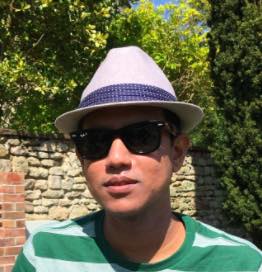Ellwood Lab
Recent News: Hebbian learning/transformer attention article published in PLOS Computational Biology
About our laboratory
We are a research laboratory in the Department of Neurobiology and Behavior at Cornell. We investigate the role dopamine in the prefrontal cortex and basal ganglia, but also investigate how machine learning models connect to computations performed by the brain. Recently, we have begun investigating ways to improve laboratory animal virtual reality using a novel whisker stimulator system and, in collaboration with the Schaffer lab, miniaturized mouse VR headsets.
Research
Prefrontal cortex dopamine
Dopamine in the prefrontal cortex (PFC) is essential for normal cognition and manipulations of it have profound effects on working memory and cognitive flexibility. It may also play an important role in psychiatric disease, especially schizophrenia, where hypodopaminergia in the PFC has been proposed as a cause of the difficult to treat negative symptoms. Despite its importance, the precise stimuli that elicit PFC dopamine release and its fundamental role in modulating PFC activity remain uncertain.
PFC dopamine is known to be strongly released following aversive stimuli, while simple rewarding stimuli, like a water droplet given to a thirsty mouse, release relatively little. Our lab is working to extend our knowledge of this system by recording PFC dopamine release in a broader range of situations, from simple rewarding and aversive stimuli to more complex stimuli, like social interactions and mixed-valence stimuli, that have a mixture of good and bad aspects. Our findings suggest that PFC dopamine responds to a broader array of stimuli than previously appreciated and its properties may fit within a modified version of the reward prediction error framework.
Dorsolateral striatum dopamine
Dopamine release in the dorsolateral striatum (DLS) has been linked with reward prediction errors, movement vigor, action selection entropy and movement initiation, but it remains controversial whether any one of these theories can explain all of the existing data. Our lab has been recording DLS dopamine during continuous running, either voluntarily initiated or driven by a treadmill, using a novel task that eliminates the anxiety responses mice show on a driven treadmill. Our findings suggest a novel view of the DLS dopamine system that is consistent with an RPE framework, but with a very narrow temporal window.
Transformers and the brain
Machine learning has been revolutionized by the discovery of transformers in 2017. These new neural networks use a mechanism called self-attention to allow for a more dynamic routing of information through a neural network and excel at sequence processing tasks like language comprehension and generation. The role of self-attention (in the machine learning sense) in the brain, however, remains uncertain. Recently, we proposed a new theory of apical dendrite computation that allows pyramidal neurons to perform the essential computations of self-attention in parallel by comparing spike trains in spines. We are currently investigating if this computation can be implemented more quickly and testing the hypothesis experimentally.
Mouse virtual reality for vision and whisking
Virtual reality setups have become a common feature of neuroscience laboratories, but the popular dome and LCD monitor-based systems have a number of weaknesses in their ability to completely control the visual stimuli delivered to the experimental subject, as well as being costly and difficult to incorporate with many experimental designs, due to their large size. We have been collaborating with the Schaffer/Nishimura lab to test miniaturized VR headsets designed for mice. In addition to being cheap and compact, we have found that they are far superior to our dome-based systems in their ability to evoke innate responses to looming stimuli, suggesting that they are more immersive.
Our lab has also been building a whisker based VR system that can represent complex 2D mazes for navigation by using a rotating whisker stimulator that can be rapidly repositioned to represent the closest wall to the experimental subject. We are currently testing our prototype to see if it can improve navigation in 2D virtual environments by adding whisker sensation.
Publications
- I. Ellwood, “Short-term Hebbian learning can implement transformer-like attention”, PLOS Computational Biology, 2024
- M. Isaacson, H. Chang, L. Berkowitz, R. Zirkel, Y. Park, D. Hu, I. Ellwood, C. Schaffer, “MouseGoggles: an immersive virtual reality headset for mouse neuroscience and behavior”, Research Square 2023 (preprint, in submission).
- A. Lee, M. Cunniff, J. See, S. Wilke, F. Luongo, I. Ellwood, S. Ponnavolu, V. Sohal, “VIP Interneurons Contribute to Avoidance Behavior by Regulating Information Flow across Hippocampal-Prefrontal Networks”, Neuron, 2019
- A. Brumback*, I. Ellwood*, C. Kjaerby*, J. Iafrati, S. Robinson, A. Lee, T. Patel, S. Nagaraj, F. Davatolhagh & V. Sohal, “Identifying specific prefrontal neurons that contribute to autism-associated abnormalities in physiology and social behavior”, Molecular Psychiatry, 2017
- I. Ellwood, T. Patel, V. Wadia, A. Lee, A. Liptak, K. Bender & V. Sohal, “Tonic or phasic stimulation of dopaminergic projections to prefrontal cortex causes mice to maintain or deviate from previously learned behavioral strategies”, Journal of Neuroscience, 2017
- S. Gee*, I. Ellwood*, T. Patel, F. Luongo, K. Deisseroth & V. Sohal, “Synaptic activity unmasks dopamine D2 receptor modulation of a specific class of layer V pyramidal neurons in prefrontal cortex”, Journal of Neuroscience, 2012
- I. Ellwood, “Singular gauge transformations in string field theory”, Journal of High Energy Physics, 2009
- I. Ellwood, “The closed string tadpole in open string field theory”, Journal of High Energy Physics, 2008
- I. Ellwood, “NS-NS fluxes in Hitchin’s generalized geometry”, Journal of High Energy Physics, 2007
- I. Ellwood, “Rolling to the tachyon vacuum in string field theory”, Journal of High Energy Physics, 2007
- I. Ellwood & M. Schnabl, “Proof of vanishing cohomology at the tachyon vacuum”, Journal of High Energy Physics, 2007
- I. Ellwood & A. Hashimoto, “Effective descriptions of branes on non-geometric tori”, Journal of High Energy Physics, 2006
- I. Ellwood & A. Hashimoto, “Open/closed duality for FZZT branes in c= 1”, Journal of High Energy, Physics 2006
People

Ian T. Ellwood, Ph. D.
Principal Investigator. Assistant Professor, Department of Neurobiology and Behavior
My background was originally in theoretical physics, where I studied string theory, a unifying model of gauge theories and gravity. Since 2010, I have been studying neuroscience and am interested in the role neuromodulators play in the flexible manner in which we and animals can switch between different learned behaviors. Although I am primarily an experimentalist now, I am interested in models of flexible learning and applications of machine learning to analyze neural activity and behavior.

Monzilur Rahman, Ph. D.
Postdoctoral Scholar
Monzilur is a computational neuroscientist who received his Ph.D. from Oxford University under the supervision of Dr Nicol Harper, Dr Ben Willmore and Professor Andrew King. Monzilur has been investigating dopamine release in the dorsolateral striatum and its role in motor initiation, termination and continuous movement. In a separate project he has also been recording from the activity of dendrites in motor cortex using 2P imaging.

Yating Yang
Graduate Student
Working on understanding the role of prefrontal dopamine as mice experience stimuli with positive, negative and mixed valence. Yating uses fiber photometry to record the fluorescence of recently developed dopamine indicators that are sensitive and bright enough to produce highly accurate and low-noise recordings of dopamine concentrations in the prefrontal cortex.

Risa Mark
Research Technician
Risa is a research technician interested in the role of different populations of neurons in the prefrontal cortex in fear conditioning. She is currently performing 2P imaging in awake behaving animals.
Willem Parent
Undergraduate
Willem is interested in the role of dopamine in the PFC and has been working with Yating Yang to perform recordings of PFC dopamine release as mice receive rewards of mixed valence.
Lab Alumni

Hunter Rice
Research Technician
Hunter worked in the lab on recording from the PFC dopamine system, first as an undergraduate and then as a technician

Mike Tronolone
Research Technician
Mike worked in the lab as a technician performing recordings in the PFC dopamine system. He also helped develop a VR whisker stimulator

Nancy Niu
Undergraduate
Nancy worked in the lab on recording from the PFC dopamine system using fiber photometry which led to an honors thesis.

Emma Kranich
Undergraduate
Worked in the lab on the developement of our mouse virtual reality system.

Jacob Groner
Undergraduate
Working on the development of a whisker-based mouse virtual reality system
Contact information

Professor Ian T. Ellwood
Department of Neurobiology and Behavior
W261 Corson/Mudd Hall
215 Tower Road
Ithaca, NY 14853
ite2@cornell.edu



